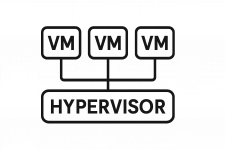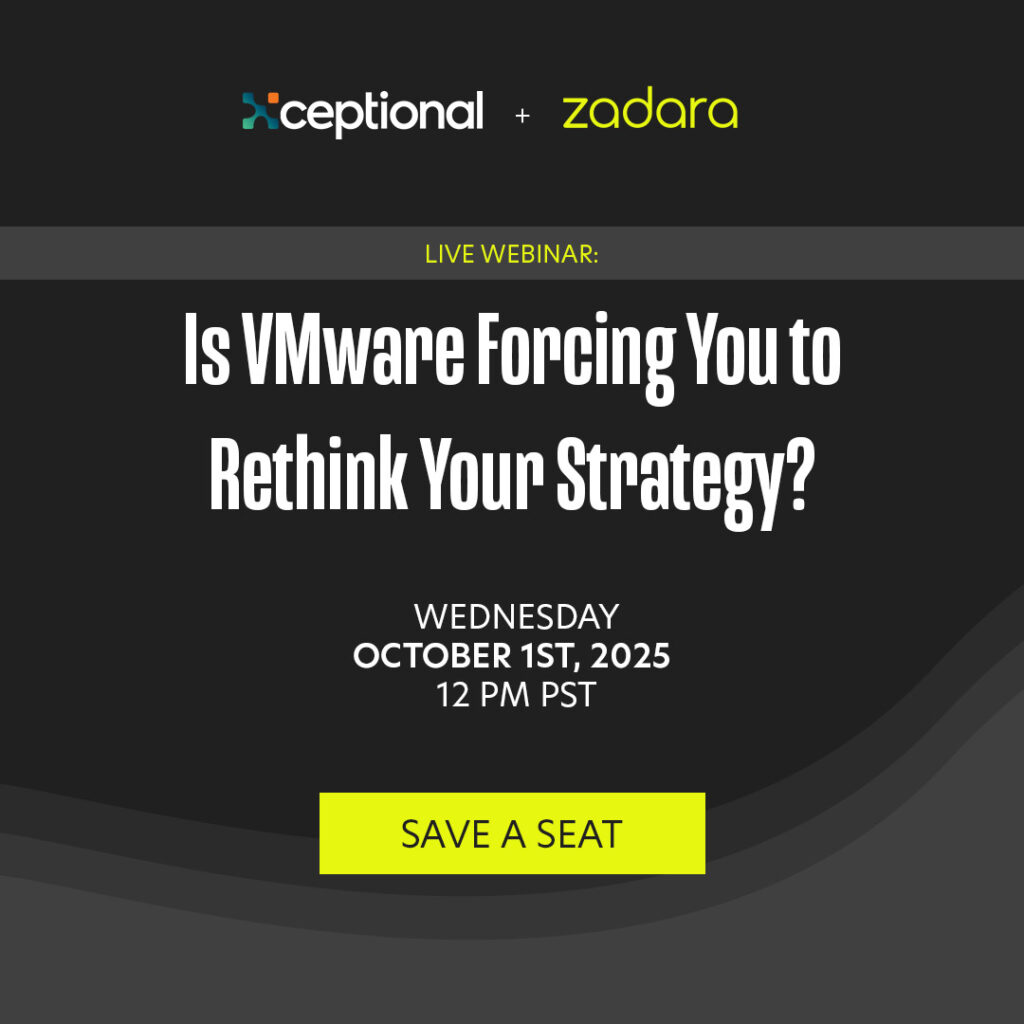A hypervisor, also known as a virtual machine monitor (VMM), is a specialized software, firmware, or hardware platform that enables the creation and management of virtual machines (VMs). It allows multiple operating systems (OSes) to run simultaneously on a single physical machine by abstracting and sharing the underlying hardware resources—such as CPU, memory, storage, and network interfaces.
Hypervisors are central to virtualization, which is a foundational technology in modern IT infrastructure. They are widely used in data centers, cloud computing platforms, software development environments, disaster recovery systems, and enterprise networks to improve resource utilization, scalability, isolation, and flexibility.
1. What Does a Hypervisor Do?
The hypervisor’s primary job is to manage hardware resources and allocate them dynamically to multiple virtual machines. Each VM operates independently with its own OS and applications, as though it were a separate physical device.
The hypervisor:
- Creates and deletes virtual machines
- Allocates CPU, memory, storage, and network resources to VMs
- Enforces isolation between VMs to prevent interference
- Manages scheduling of VM access to physical hardware
- Provides virtualization of hardware and sometimes emulation
This enables a single physical server to consolidate workloads, reduce hardware costs, and increase operational efficiency.
2. Types of Hypervisors
Hypervisors are typically categorized into two types:
Type 1: Bare-Metal Hypervisors
These hypervisors run directly on the host’s physical hardware without an underlying operating system. They are considered more efficient and secure because they reduce the attack surface and remove intermediary layers.
Examples:
- VMware ESXi
- Microsoft Hyper-V (in server mode)
- KVM (Kernel-based Virtual Machine)
- Citrix Hypervisor (formerly XenServer)
- Nutanix AHV
Advantages:
- High performance
- Lower latency
- Better resource efficiency
- Common in production and enterprise data centers
Type 2: Hosted Hypervisors
These hypervisors run atop a host operating system (like Windows or Linux) and rely on the OS to manage hardware interactions.
Examples:
- Oracle VirtualBox
- VMware Workstation
- Parallels Desktop (Mac)
- QEMU (when run in user-mode)
Advantages:
- Easier to install and manage
- Great for desktop environments, development, and testing
- Supports snapshots and live migration in many cases
Trade-offs:
- Slightly reduced performance compared to bare-metal
- Potentially less secure due to OS-level vulnerabilities
3. Core Components and Functions
a. Virtual Machine (VM)
An emulated computer that runs its own OS, hosted by the hypervisor.
b. Virtual Hardware
Includes virtual CPUs, RAM, disk drives, NICs, and more. These appear to the guest OS as physical components.
c. Guest OS
The operating system installed on a virtual machine, unaware that it’s running in a virtualized environment.
d. Host OS (for Type 2)
The operating system on which a hosted hypervisor runs.
e. VM Scheduler
Controls how CPU cycles are allocated to VMs, maintaining performance balance.
f. Memory Management
Includes memory ballooning, overcommitment, and paging to optimize RAM usage across VMs.
4. Use Cases for Hypervisors
a. Server Consolidation
Run multiple workloads on a single physical server, reducing hardware costs and power usage.
b. Development and Testing
Isolate environments for different software versions, OSes, or network configurations.
c. Disaster Recovery
Mirror production VMs offsite for rapid failover and continuity.
d. Cloud Computing
Public and private cloud providers use hypervisors to provision and manage virtual compute instances.
e. Virtual Desktop Infrastructure (VDI)
Deliver desktop environments to users from centralized infrastructure.
f. Security and Sandboxing
Run untrusted applications in isolated VMs to prevent system-wide compromise.
5. Benefits of Using a Hypervisor
a. Resource Optimization
Utilize physical resources more efficiently by running multiple VMs per server.
b. Cost Savings
Lower hardware, cooling, and energy costs by consolidating workloads.
c. Scalability
Easily spin up or decommission VMs to adapt to changing workloads.
d. High Availability and Resilience
Advanced hypervisors support failover, load balancing, and live migration between hosts.
e. Portability
VMs can be moved across different physical machines, making infrastructure more agile.
f. Enhanced Security
Hypervisors enforce isolation between VMs, minimizing risk of cross-infection or data leakage.
6. Challenges and Considerations
a. Performance Overhead
Virtualization introduces some latency, especially in Type 2 hypervisors. Bare-metal hypervisors mitigate this.
b. Complexity
Requires planning around storage, network configurations, and VM sprawl management.
c. Licensing Costs
Commercial hypervisors may have high licensing and support fees.
d. Security Risks
Hypervisors are attractive targets for attackers. Vulnerabilities (e.g., hyperjacking) can lead to full system compromise.
e. Resource Contention
Multiple VMs sharing the same host may impact each other’s performance if not managed properly.
7. Hypervisors vs. Containers
While hypervisors virtualize at the hardware level, containers virtualize at the OS level, enabling multiple applications to share the same OS kernel.
| Feature | Hypervisor (VMs) | Containers (Docker, Kubernetes) |
|---|---|---|
| Overhead | Higher (full OS per VM) | Lower (shared OS kernel) |
| Isolation | Strong (full isolation) | Moderate (process-level isolation) |
| Startup Time | Minutes | Seconds |
| Use Case | Mixed OS environments, legacy apps | Microservices, CI/CD pipelines |
| Portability | OS-independent | OS-dependent (typically Linux) |
In many environments, hypervisors and containers are used together, with containers running inside VMs for added security and flexibility.
8. Key Hypervisor Vendors and Platforms
| Vendor | Hypervisor Product | Notable Features |
|---|---|---|
| VMware | ESXi, vSphere | Industry leader, enterprise features |
| Microsoft | Hyper-V | Native in Windows Server |
| Red Hat | KVM (via RHEL) | Open-source, enterprise-ready |
| Citrix | Citrix Hypervisor (Xen) | Scalable, cloud-optimized |
| Nutanix | AHV | Built into Nutanix HCI stack |
| Oracle | VirtualBox | Free, desktop virtualization |
| QEMU | QEMU/KVM | Lightweight and flexible for Linux |
9. Emerging Trends in Hypervisor Technology
a. Lightweight Hypervisors
Designed for edge computing and IoT use cases, where resource constraints demand minimal overhead.
b. GPU Virtualization
Hypervisors now support virtualized GPUs, essential for AI, ML, and rendering workloads.
c. Nested Virtualization
Allows a hypervisor to run inside a VM—useful for DevOps and testing virtualization stacks.
d. Integration with Containers
Modern hypervisors integrate natively with Kubernetes, Docker, and container orchestrators.
e. Cloud Hypervisors
Public cloud providers like AWS, Azure, and GCP use hypervisor-optimized instances for maximum tenant isolation and performance.
10. Future of Hypervisors
Hypervisors continue to evolve as IT shifts toward hybrid cloud, edge computing, and zero-trust security. Key directions include:
- Hyperconverged Infrastructure (HCI): Seamless integration of compute, storage, and networking with hypervisor management.
- AI/ML Integration: Smart hypervisors that adjust resource allocation using predictive analytics.
- Confidential Computing: Use of secure enclaves to protect data in use within virtualized environments.
- Sustainability Optimization: Hypervisors enabling energy-efficient resource consolidation and load balancing.
Conclusion
A hypervisor is the backbone of virtualization and modern IT operations. By abstracting hardware and enabling multiple virtual machines to run concurrently on a single system, hypervisors provide organizations with the flexibility, efficiency, and resilience needed to scale and innovate securely.
Whether you’re managing a public cloud environment, building a private data center, or running desktop virtualization on your laptop, understanding how hypervisors work—and how to choose and optimize them—remains a critical skill in today’s IT landscape.


